State laws vary widely for civilian stun gun ownership, requiring background checks, training, and safety features like ergonomic designs and advanced triggers. Understanding these regulations and best safety features is crucial for responsible ownership, proper deployment, and avoiding legal repercussions. Training mandates ensure safe and effective use while empowering self-defense in emergency situations.
“Uncovering the legal landscape of civilian stun gun ownership, this comprehensive guide navigates state-by-state regulations. From understanding the legal framework to exploring safety features like the best in stun guns’ protection mechanisms, we demystify ownership requirements. Learn about permits, licenses, and training mandates as we break down each state’s unique laws. Additionally, we address common misconceptions, ensuring informed decisions for responsible stun gun ownership.”
- Legal Framework for Civilian Stun Gun Ownership
- State-Specific Requirements and Regulations
- Understanding The Basics of Taser Safety Features
- Permits and Licenses: What You Need to Know
- Responsible Use and Training Mandates
- Common Misconceptions About Stun Guns
Legal Framework for Civilian Stun Gun Ownership
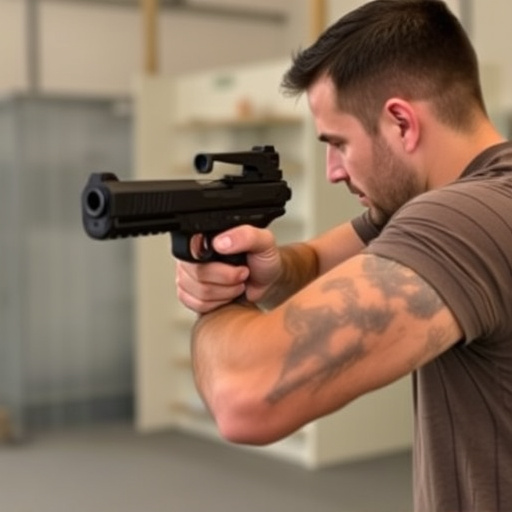
The legal framework governing civilian stun gun ownership varies significantly across states, reflecting a complex interplay between public safety and individual rights. Generally, states have enacted specific laws delineating who can possess, carry, and use stun guns, along with strict requirements for responsible ownership. These regulations often include provisions on background checks, waiting periods, and restrictions based on age, criminal history, or other factors.
When considering the best safety features in stun guns, it’s crucial to align these attributes with the legal landscape. Reliable triggering mechanisms, safe storage options, and clear user instructions are essential components that not only enhance personal security but also ensure compliance with state laws. Understanding these requirements is paramount for any civilian looking to acquire a stun gun, as it enables responsible ownership and minimizes potential legal repercussions.
State-Specific Requirements and Regulations
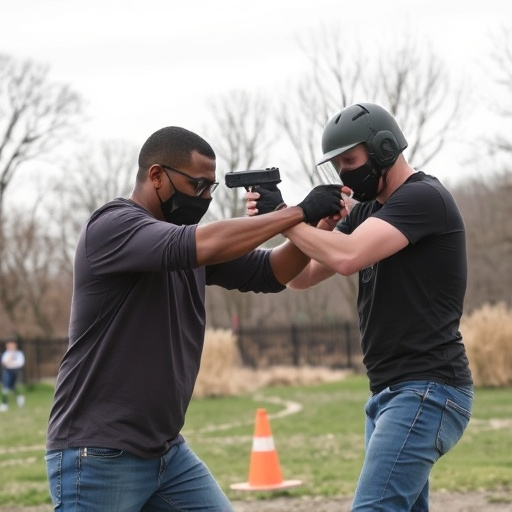
Each state in the US has its own set of regulations surrounding civilian stun gun ownership, with varying requirements for purchase, possession, and use. When considering a stun gun, understanding these state-specific laws is crucial to ensure compliance and safety. Many states have strict guidelines, including age restrictions, mandatory training, and background checks. For instance, some states like California demand thorough safety training and registration, prioritizing public safety with stringent regulations on stun gun ownership.
The best safety features in stun guns, such as ergonomic designs, bright LED lights, and high-voltage outputs, are often governed by these state laws. Some regions also mandate specific security measures for storage and transportation, reflecting a holistic approach to managing civilian stun gun ownership. Staying informed about your state’s regulations is key to making an informed decision when purchasing a stun gun while adhering to the best safety practices.
Understanding The Basics of Taser Safety Features

Tasers, or stun guns, are designed to incapacitate individuals through electrical impulses, but they come with safety features that users should understand before considering ownership. The best safety features in stun guns include mechanical and electronic safeguards to prevent accidental activation and ensure controlled use. Many modern tasers have a trigger mechanism that requires a firm press, reducing the risk of unintentional deployment. Additionally, stun guns often feature lockouts or safety switches that disable the device when not in use, ensuring it remains inactive until intentionally activated by the owner.
Some models incorporate LED indicators and alarm systems to signal when the taser is charged and ready for use, providing users with a visual and auditory cue. These safety features are crucial, especially given the potential legal consequences of improper use. Understanding how these mechanisms work is essential for responsible ownership and ensuring that stun guns are employed as intended in self-defense situations.
Permits and Licenses: What You Need to Know
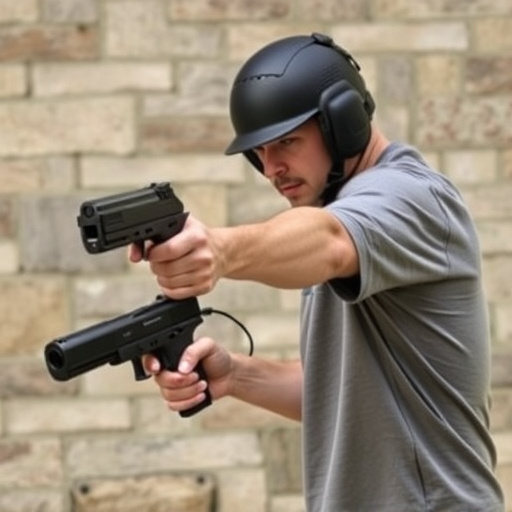
When considering civilian taser ownership, understanding the requirements for permits and licenses is crucial. Each state has its own set of regulations dictating who can possess a stun gun and under what circumstances. One key aspect to look into is the best safety features in stun guns, as these devices are designed for self-defense but also come with stringent legal oversight.
Obtaining the necessary permits involves background checks, training courses, and sometimes even specific reasons for ownership, such as personal protection or professional use. Some states may require annual renewals or additional certifications to maintain compliance. Familiarizing yourself with these requirements is essential to ensure you’re not only legally armed but also equipped with the best safety features in stun guns, thereby enhancing your overall security.
Responsible Use and Training Mandates
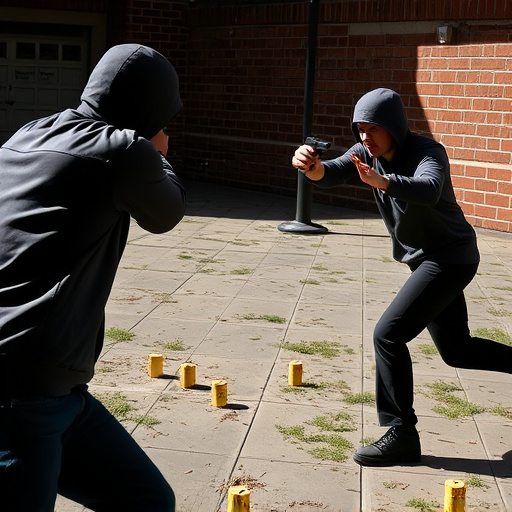
Many states with civilian taser ownership laws also enforce strict responsible use and training mandates. These requirements are designed to ensure that individuals handling stun guns possess the necessary skills and awareness to deploy them safely and effectively. The best safety features in stun guns, such as automatic shut-off mechanisms, high voltage output control, and ergonomic designs, play a pivotal role in this context. Responsible use training typically covers proper grip, target acquisition, de-escalation techniques, and understanding the weapon’s range and effectiveness. Some states even mandate regular recertification to keep individuals up-to-date with the latest safety protocols and best practices.
These training mandates not only equip citizens with the knowledge to handle tasers responsibly but also foster a culture of accountability and safety within communities. By prioritizing responsible use, states aim to minimize potential risks associated with stun gun deployment while empowering individuals to protect themselves and others in situations requiring immediate defense.
Common Misconceptions About Stun Guns
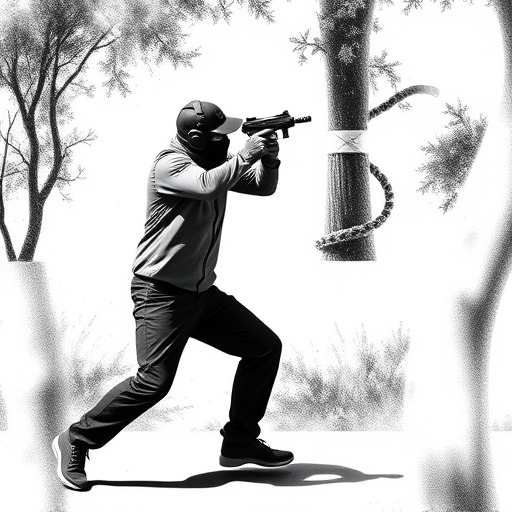
Many people hold misconceptions about stun guns, often referred to as Tasers. A common belief is that they are a safe alternative to firearms for self-defense. However, this isn’t entirely true; stun guns still pose risks and require responsible ownership. They use electric current to disrupt muscle control, causing the target to fall and temporarily incapacitate them. But these devices are not without dangers.
One misconception is that stun guns have minimal side effects. In reality, they can cause severe pain, muscle burning, and even temporary paralysis. Moreover, their effectiveness depends on proper application, which requires training. The best safety features in stun guns include ergonomic designs for better control, high-capacity batteries, and advanced triggers to ensure accurate use. Always remember, owning a stun gun comes with significant responsibilities, and understanding the device’s limitations is crucial for responsible usage.
When considering civilian stun gun ownership, understanding state laws and regulations is paramount. Each state has its own set of requirements for purchasing, carrying, and using stun guns, emphasizing responsible use and safety. The best safety features in stun guns, such as advanced trigger mechanisms and durable construction, should be accompanied by proper training and a clear grasp of local regulations. By staying informed about these laws, you can ensure a safe and legal experience with your stun gun, contributing to your personal security while respecting the regulatory framework surrounding this powerful tool.
